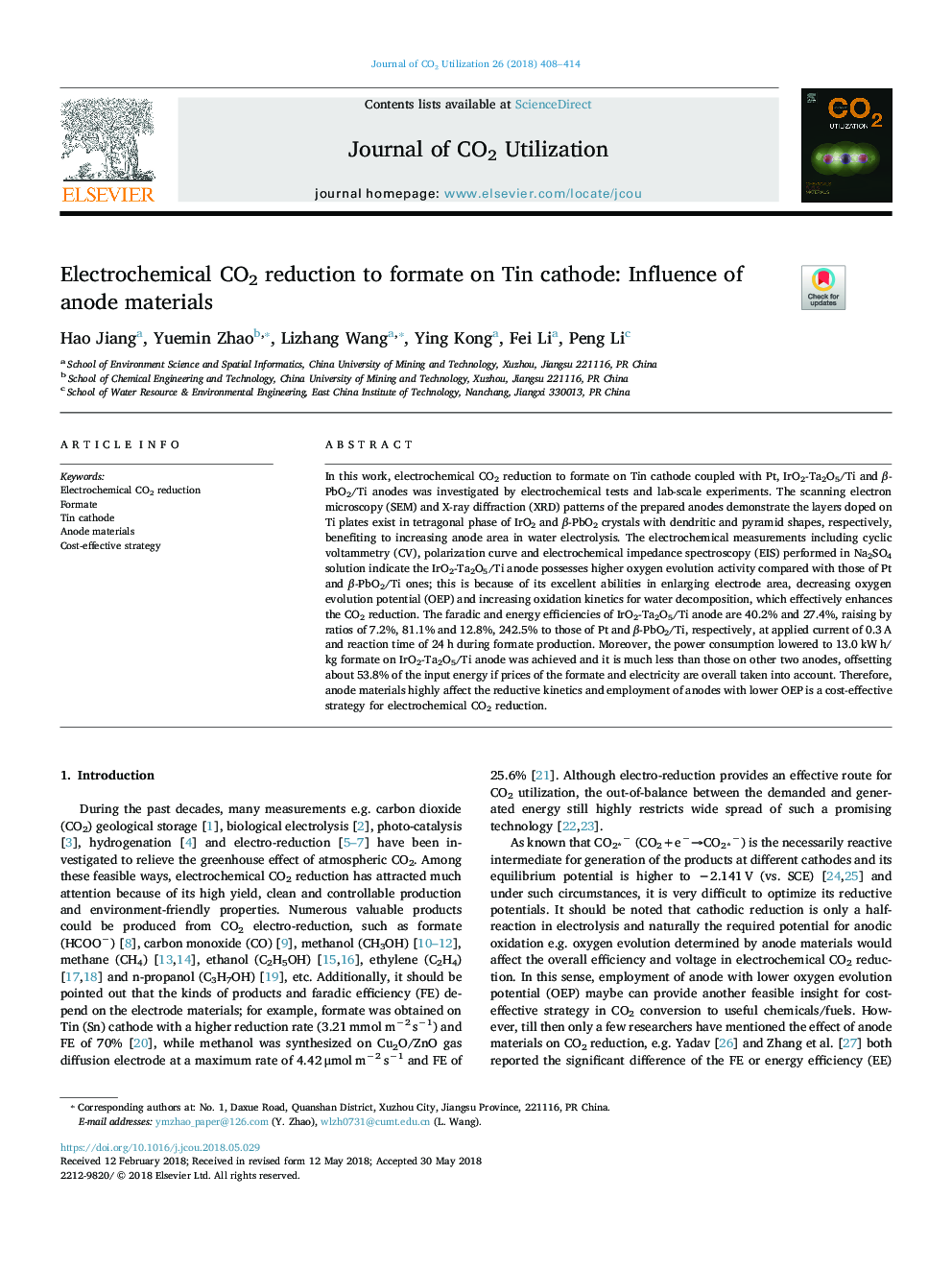| Article ID | Journal | Published Year | Pages | File Type |
|---|---|---|---|---|
| 6528506 | Journal of CO2 Utilization | 2018 | 7 Pages |
Abstract
In this work, electrochemical CO2 reduction to formate on Tin cathode coupled with Pt, IrO2-Ta2O5/Ti and β-PbO2/Ti anodes was investigated by electrochemical tests and lab-scale experiments. The scanning electron microscopy (SEM) and X-ray diffraction (XRD) patterns of the prepared anodes demonstrate the layers doped on Ti plates exist in tetragonal phase of IrO2 and β-PbO2 crystals with dendritic and pyramid shapes, respectively, benefiting to increasing anode area in water electrolysis. The electrochemical measurements including cyclic voltammetry (CV), polarization curve and electrochemical impedance spectroscopy (EIS) performed in Na2SO4 solution indicate the IrO2-Ta2O5/Ti anode possesses higher oxygen evolution activity compared with those of Pt and β-PbO2/Ti ones; this is because of its excellent abilities in enlarging electrode area, decreasing oxygen evolution potential (OEP) and increasing oxidation kinetics for water decomposition, which effectively enhances the CO2 reduction. The faradic and energy efficiencies of IrO2-Ta2O5/Ti anode are 40.2% and 27.4%, raising by ratios of 7.2%, 81.1% and 12.8%, 242.5% to those of Pt and β-PbO2/Ti, respectively, at applied current of 0.3â¯A and reaction time of 24â¯h during formate production. Moreover, the power consumption lowered to 13.0â¯kWâ¯h/kg formate on IrO2-Ta2O5/Ti anode was achieved and it is much less than those on other two anodes, offsetting about 53.8% of the input energy if prices of the formate and electricity are overall taken into account. Therefore, anode materials highly affect the reductive kinetics and employment of anodes with lower OEP is a cost-effective strategy for electrochemical CO2 reduction.
Related Topics
Physical Sciences and Engineering
Chemical Engineering
Catalysis
Authors
Hao Jiang, Yuemin Zhao, Lizhang Wang, Ying Kong, Fei Li, Peng Li,
